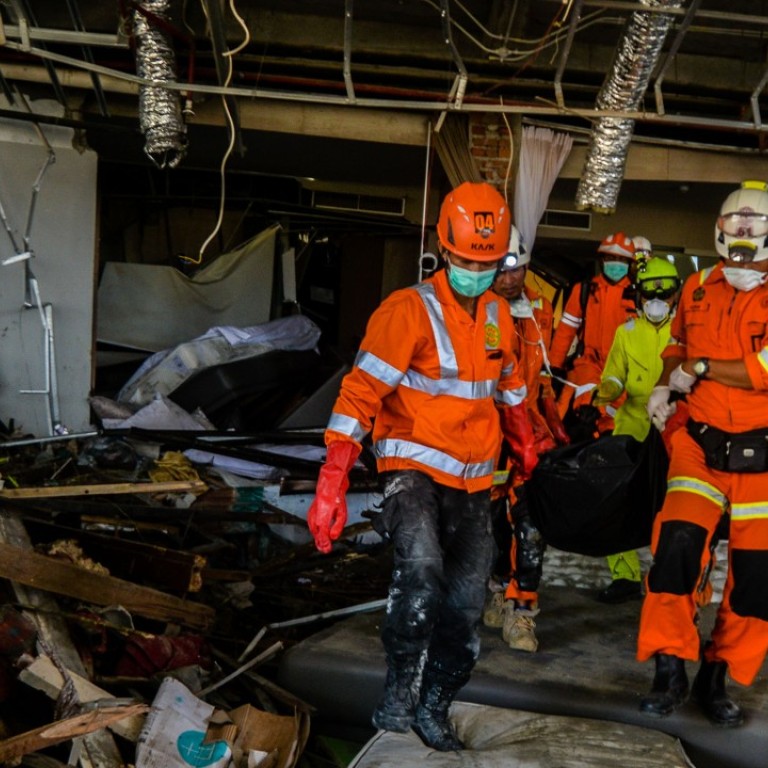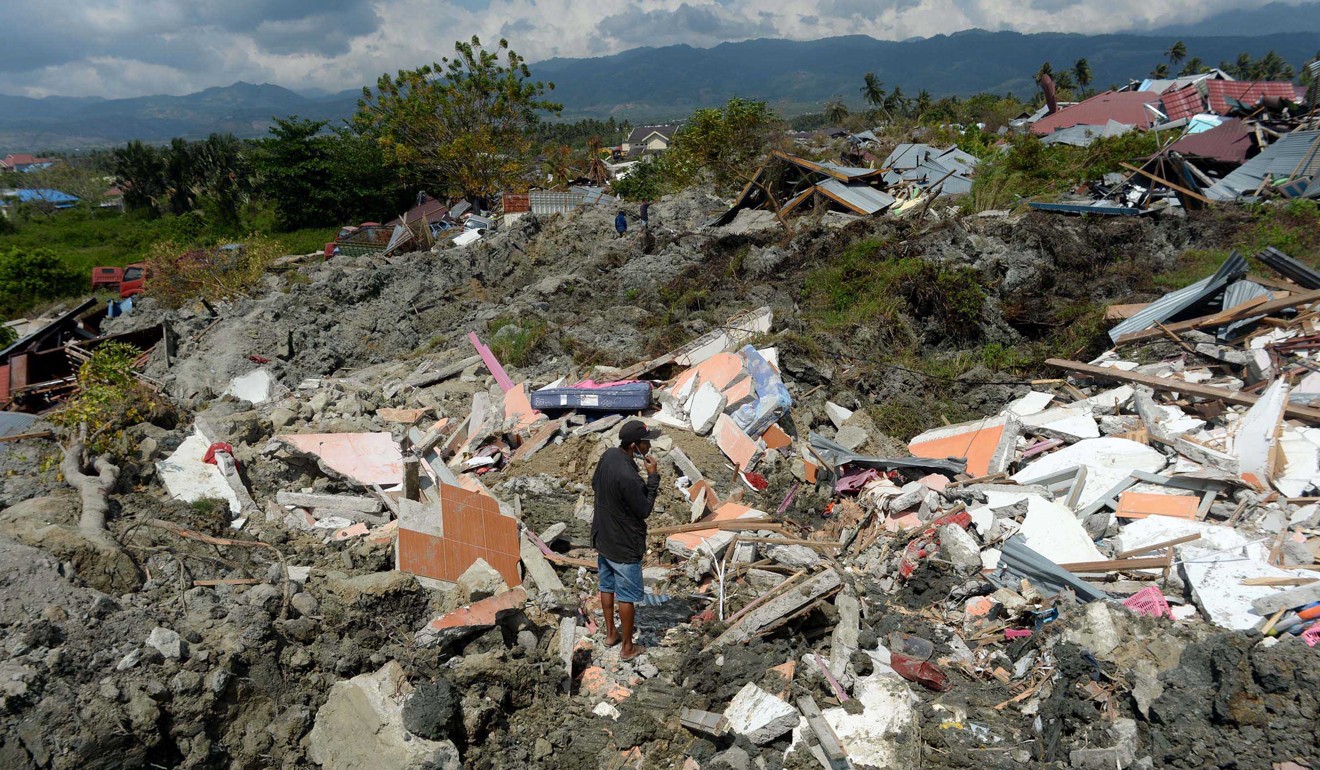
How ‘fake news’ has complicated relief efforts in Palu, spreading panic after deadly quake and tsunami
Among the hoaxes declared false by the government are that the mayor of Palu was killed in the disaster, that free flights were available to Palu for families of the victims and that Bili Bili dam in South Sulawesi had cracks and was about to burst
Indonesian authorities are struggling to counter fake news reports causing panic among residents of the island of Sulawesi in the wake of the devastating earthquake that hit last week.
False reports, including that another more severe earthquake was due to strike the region and that a dam was due to collapse, have added to the fear in Central Sulawesi, where the death toll from the earthquake and the resulting tsunami has reached 1,400 and is expected to rise further.
The Indonesian ministry of information and communication have issued two press releases in the last few days debunking “hoax news”, as fake news is called in Indonesia.
Among the hoaxes declared false by the government are that the mayor of Palu, a city that was devastated by the earthquake, was killed in the disaster, that free flights were available to Palu for families of the victims and that Bili Bili dam in South Sulawesi had cracks and was about to burst.
People have also posted photographs of dead bodies, which they say were from the earthquake, when the photographs actually show the effects of other disasters, including the 2004 Boxing Day tsunami.
Fake news is a serious problem in Indonesia. Last week the government announced it would be holding weekly briefings on fake news to help the public “sort through the news”.
I told them it is hoax. If you leave your house people will come and steal, that is why they spread this fake message
Another false report was that a 8.1 magnitude earthquake was due to strike Central Sulawesi in the wake of Friday’s earthquake, which had a magnitude of 7.5. The national emergency agency, the BNBP, confirmed that this report was fake. People in Palu said false reports were continuing to be spread.
“I went around talking to people in Palu this morning and they were staying, we heard there will be biggest earthquake tomorrow [Friday],” said Badarudin, a Palu resident. “I told them it is hoax. If you leave your house people will come and steal, that is why they spread this fake message.”
Badarudin said the fake news was mostly being spread by word of mouth, as electricity was still down in the city on Thursday and there were only limited places for people to charge their phones.
Bambang Triyono, an aid worker from the humanitarian NGO, Aksi Cepat Tanggap (ACT), which has a team of volunteers distributing aid in Palu, says fake news often spreads in times of disaster.
“It happened in Lombok too, there was news there would be a big tsunami weeks after the disaster happened,” he said of the deadly quakes in Lombok in late July and August.

The chief spokesperson for the BNBP, Sutopo Purwo Nugroho, has used Twitter repeatedly in the days since the earthquake to debunk false news reports, many of which relate to the eruption of the Soputan volcano on Sulawesi island on Wednesday.
The volcano, which is located almost 1,000km from Palu, the city at the epicentre of Friday’s earthquake, did erupt. But hoax news reports used doctored photographs and videos to suggest the eruption was far more serious than it was.
One video, shared by Sutopo, shows lava moving across farmland, another video shows a terrifying cloud of ash move down a street, which Sutopo said came from a volcanic eruption in South America.

Sutopo shared photographs showing an enormous cloud of ash coming out of the volcano, with the message: “This is the eruption of Mount Soputan. This photo is a hoax. This engineered photo was also disseminated as the eruption of Mount Sinabung in 2014.”
Police have said they have identified four people whom they suspect have initiated the hoaxes, saying they come from the Majene region of West Sulawesi.
“We already have their identities. We hope to arrest them soon,” police chief spokesman Inspector General Setyo Wasisto told Antara News, the state-backed Indonesian news agency.

